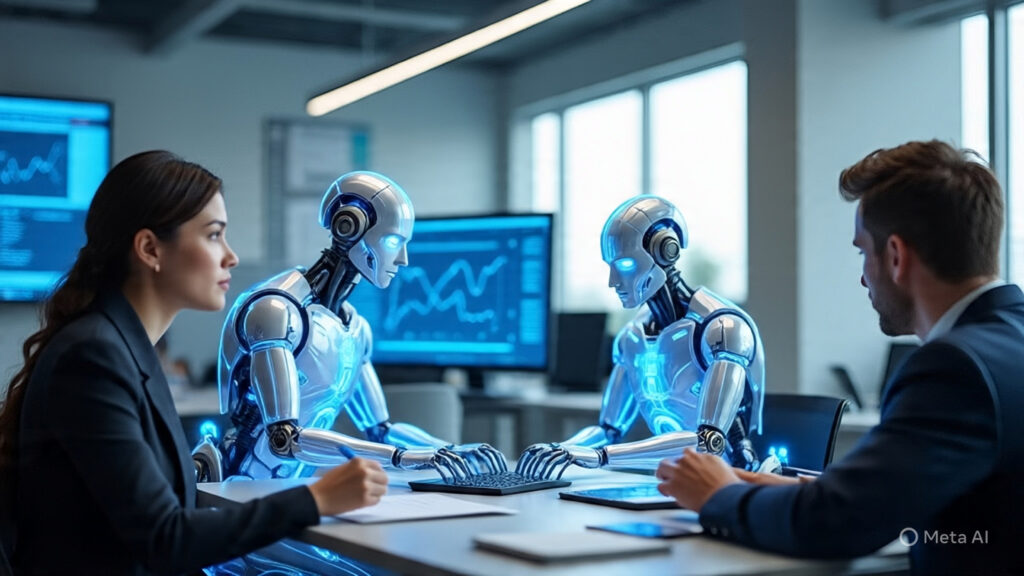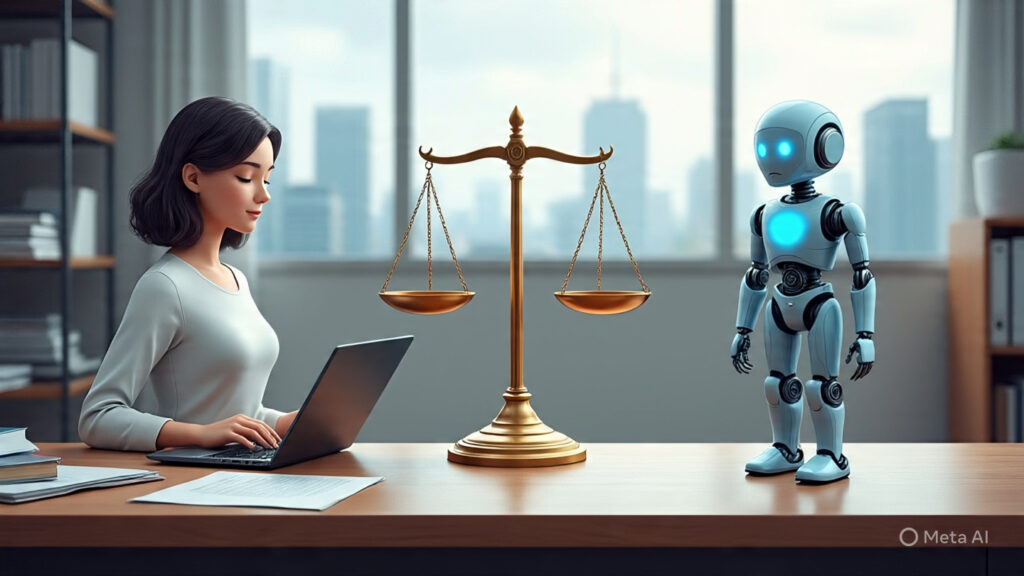Artificial intelligence (AI) is revolutionizing how we work, communicate, and live. From automating routine tasks to enabling remote collaboration, AI promises unparalleled efficiency and productivity. Yet amid this technological advancement, a crucial question arises: how does AI affect human connection? Can AI, built primarily for logic and automation, truly address the growing epidemic of loneliness? Or does the rise of AI risk further isolating us in a hyper-digital world?
This article explores the intricate relationship between AI and human connection—the benefits, challenges, and opportunities. We’ll analyze how AI reshapes social interaction in the workplace, the paradox of remote work enabled by AI, and the emerging role of AI companions. Most importantly, we’ll discuss how to harness AI responsibly, ensuring it enhances rather than replaces our essential human bonds.

How AI is Changing Human Interaction at Work
The workplace is one of the primary arenas where AI’s impact on human connection is most visible. AI automates many routine jobs such as data entry, scheduling, and customer support, freeing employees from mundane tasks. However, this shift can reduce everyday social interactions that naturally happen during work — the brief chats, coffee breaks, or collaborative brainstorming sessions that foster camaraderie and trust.
Automation and the Social Cost
While AI improves efficiency, it often replaces jobs that provided opportunities for casual socializing. These seemingly small moments build team spirit and a sense of belonging. Without them, employees may experience feelings of isolation and loss of identity tied to their roles. Studies link job displacement and reduced human contact to increased workplace loneliness and stress.
AI’s Impact on Team Collaboration
In AI-augmented workplaces, teams increasingly rely on technology to analyze data and generate reports. This might reduce face-to-face discussion and brainstorming, impacting team dynamics. If workers communicate more with AI systems than colleagues, social bonds and trust may weaken—key elements for innovation and employee satisfaction.

Remote Work, AI, and the Loneliness Paradox
AI-powered tools like video conferencing, instant messaging, and project management apps have made remote work seamless. Employees can collaborate from anywhere globally, enjoying flexibility and autonomy. But this convenience comes with a hidden cost: the paradox of digital connectedness yet emotional isolation.
While virtual meetings increase the quantity of interactions, they often lack the depth and warmth of in-person contact. Many remote workers report feelings of loneliness and disconnection despite being “always online.” This raises concerns about the long-term effects of AI-enabled remote work on social well-being.

Loneliness: The Silent Epidemic
Loneliness goes beyond physical solitude—it’s the painful feeling of being disconnected despite being surrounded by people or technology. This emotional state is linked to serious mental and physical health issues, making it a growing societal concern.
- Psychological Impact: Chronic loneliness can lead to depression, anxiety, and cognitive decline.
- Social Statistics: Surveys reveal that about 20% of adults often feel lonely, with younger and older populations especially vulnerable.
- Physical Health Risks: Loneliness increases risks of heart disease, weakens the immune system, and can even shorten lifespan.
As AI changes social structures, understanding and addressing loneliness is vital for building healthy communities.

Can AI Companions Solve Loneliness?
In response to rising social isolation, innovative companies are developing AI companions—chatbots and social robots designed to simulate conversation and provide emotional support.
The Promise of AI Companionship
AI companions can listen, respond empathetically, and provide a sense of presence when human interaction isn’t available. Examples include social robots in eldercare facilities that engage residents in games and conversation, or virtual AI friends that offer non-judgmental interaction for people struggling with social anxiety.
The Limits of Artificial Empathy
However, AI lacks true consciousness and emotional experience. While it can mimic empathy through language processing, it cannot genuinely share human feelings or offer real understanding. Overreliance on AI companions risks replacing meaningful human relationships with simulated interactions, potentially deepening loneliness rather than alleviating it.

Designing Workplaces That Foster Human Connection in an AI Era
To prevent AI from eroding human bonds, organizations must proactively cultivate connection.
- Physical and Virtual Spaces for Interaction: Creating comfortable common areas, encouraging informal chats, and using virtual “water cooler” channels can simulate spontaneous interactions, even remotely.
- Inclusive Culture: Leaders should foster a culture of belonging through team-building, social events, and encouraging check-ins among colleagues.
- Using AI to Enhance Connection: Smart AI can identify isolated employees, suggest team activities, or facilitate networking by matching shared interests—helping bridge social gaps instead of widening them.

The Irreplaceable Human Element
Despite AI’s advances, nothing replaces genuine human empathy and connection. True relationships involve vulnerability, shared experiences, and emotional support that no machine can replicate. Our social and emotional well-being depends on authentic bonds grounded in mutual understanding.
Practical Tips to Strengthen Your Social Connections
You can proactively build your social network regardless of AI’s rise:
- Engage in local groups or volunteer opportunities.
- Accept social invitations even when shy.
- Make time for friends and family regularly.
- Reach out to old acquaintances.
- Balance technology use with in-person interactions.

Striking a Healthy Balance Between AI and Human Connection
Using AI to increase productivity is smart, but preserving social health is essential. Set boundaries on screen time and prioritize face-to-face interactions to maintain emotional wellness. AI should be a tool that supports, not replaces, the richness of human connection.
Conclusion: Navigating AI and Human Connection Together
AI is transforming work and communication in profound ways. While it automates tasks and enables remote collaboration, it cannot fix loneliness or replace genuine human connection. The future depends on our ability to balance technological progress with our fundamental need for empathy and belonging.
By designing workplaces for connection, leveraging AI to enhance relationships, and prioritizing authentic human bonds, we can ensure AI serves humanity — not isolates it. Our greatest strength lies in our capacity to connect, empathize, and build lasting relationships. Let’s keep the human heart at the center of our digital revolution.







